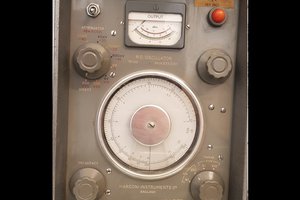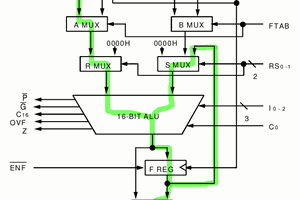Most electronic things nowadays start with an AC/DC converter, and those are almost always insensitive to line frequency (most also will operate on damn near any world-wide voltage). But some devices exist that are sensitive to frequency. In particular, vintage synchronous clocks or phonographs or what not might run 8.3% slow when run on European power.
This project aims to supply 15W of 120VAC at 60 Hz, with the 60 Hz frequency controlled by a software PLL from the incoming 50 Hz frequency. This will allow the frequency discipline imposed on the source grid to be reflected on the output.
The circuit starts with a 1:1 isolation transformer rated for 20+ VA with a center-tapped secondary. Isolating the incoming power is done for safety more than anything. The center tap of the secondary is grounded and also forms the neutral for the resulting output circuit.
The two output legs go to a bridge rectifier and a big, beefy filter cap. The result is a bipolar 155 volts or so unregulated DC supply. Unfortunately, this is a little bit low, as the AC peak voltage for 120 Vrms is 170V. But 155 Vpeak in RMS is just under 110 volts, which for most purposes should be close enough.
To turn that bipolar supply back into AC, we'll us a push-pull transistor pair. The transistors will need to be rated for a Vce of over 400V, so they'll need to be pretty sturdy, but since the circuit is only going to supply 15W, they only need to be rated for maybe a minimum of 250 mA.
The two pass transistors will be fed a synthesized 60 Hz sine wave generated from the PWM output of a micro controller. The controller will be fed a 50 Hz pulse train derived from the source.
To get that 50 Hz pulse train, you start with another transformer, this one a step-down one with a 6v secondary. One leg of the secondary is grounded and the other fed through a rectifier diode. From there, it goes to the input of a comparator that's configured with hysteresis. The output of the comparator will be a square wave with probably a weird duty cycle, but all that matters is that the rising edges will be at the incoming 50 Hz nominal line frequency.
The controller will have a 256 byte sine wave table. One of the internal timers will be set up to generate a 60*256, or 15.36 kHz interrupt. The incoming 50 Hz signal will be used to trigger a capture of this timer value and the difference between successive captures should be 307 counts (15360/50 = 307.2), nominally. If it isn't, then the counter's cycle count will be incremented or decremented as appropriate. The result will be a free-running sine wave whose frequency is adjusted to keep it locked to the incoming 50 Hz.
The output of the push-pull transistor pair goes to a 125 mA fuse and then to the hot line of a NEMA 5-15 outlet. The neutral and ground lines are tied together and to the circuit ground and hence to the incoming power ground.
 Nick Sayer
Nick Sayer
 j
j
 MS-BOSS
MS-BOSS
 Yann Guidon / YGDES
Yann Guidon / YGDES